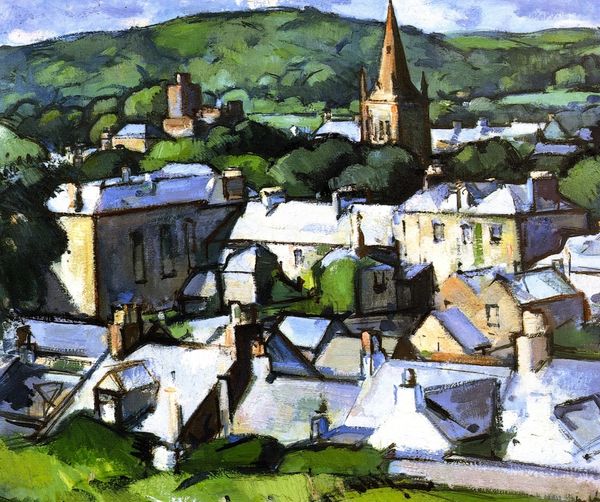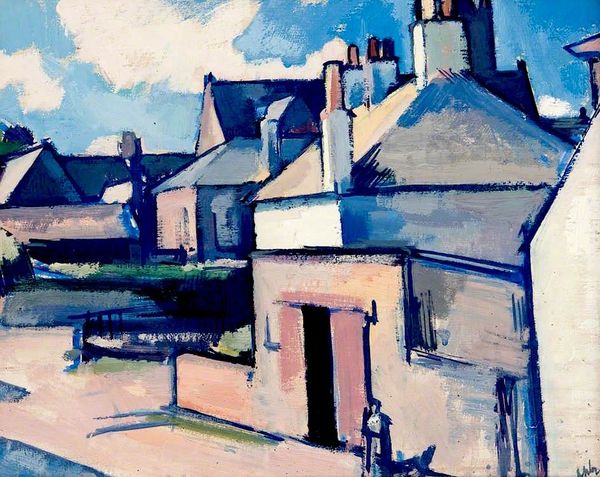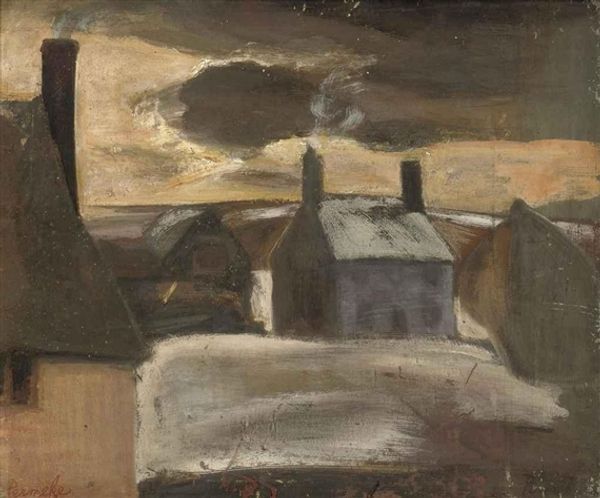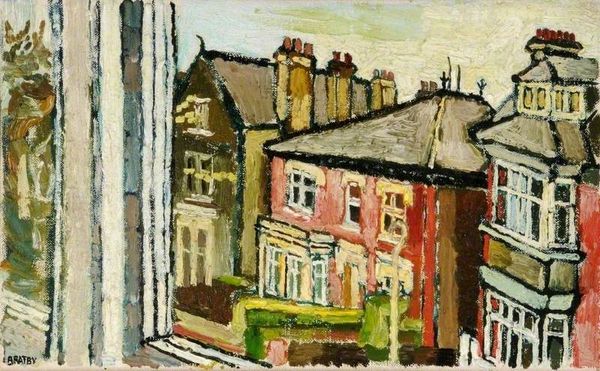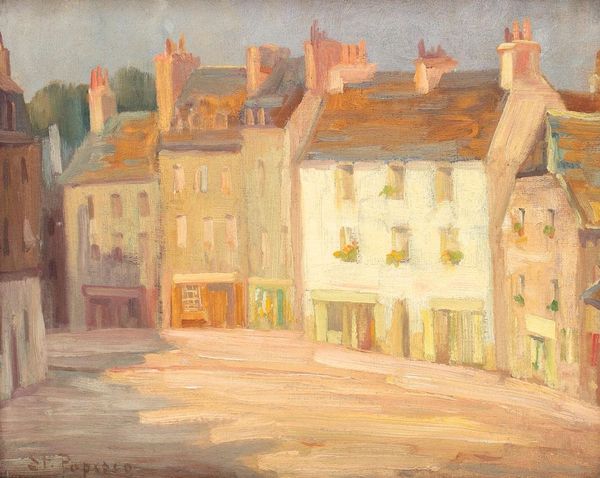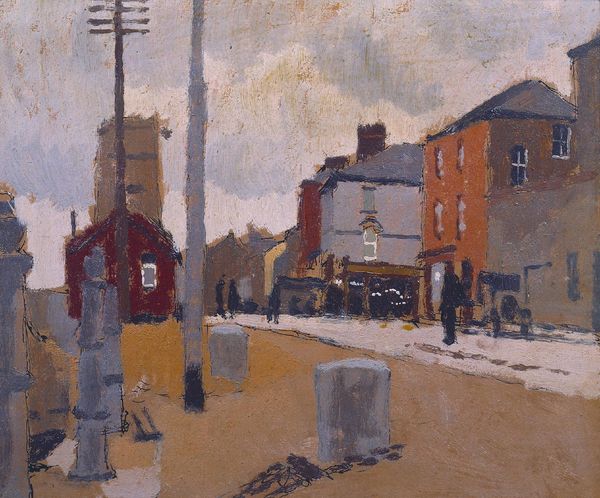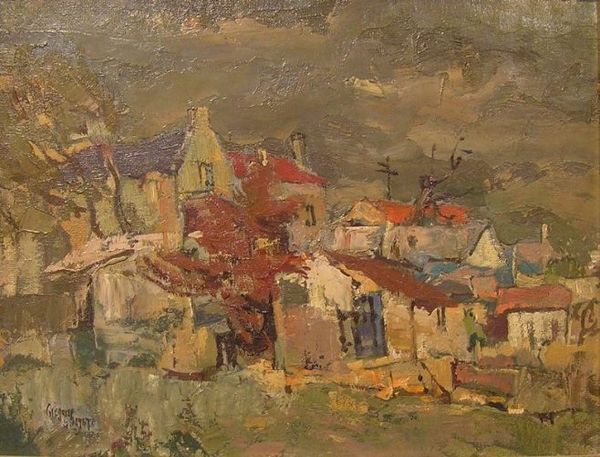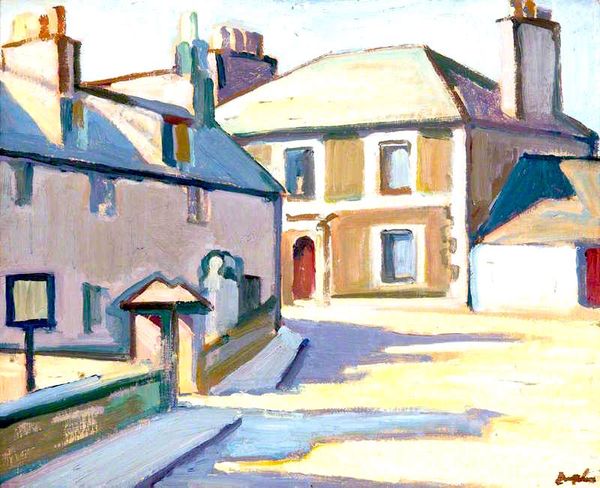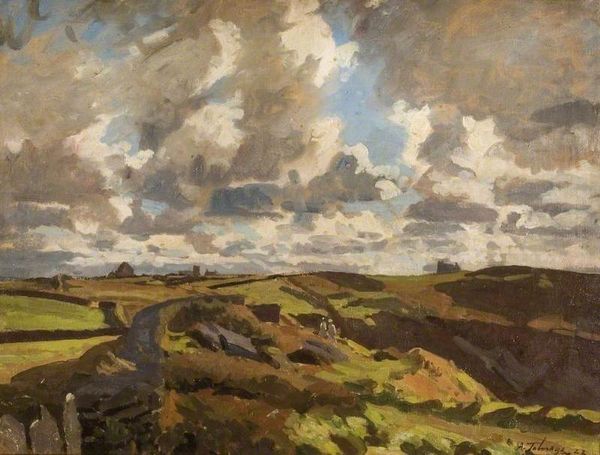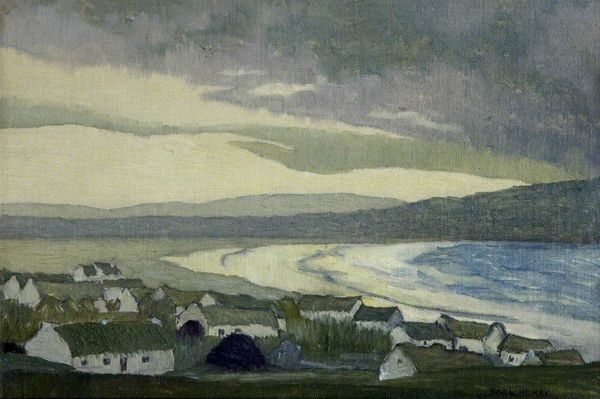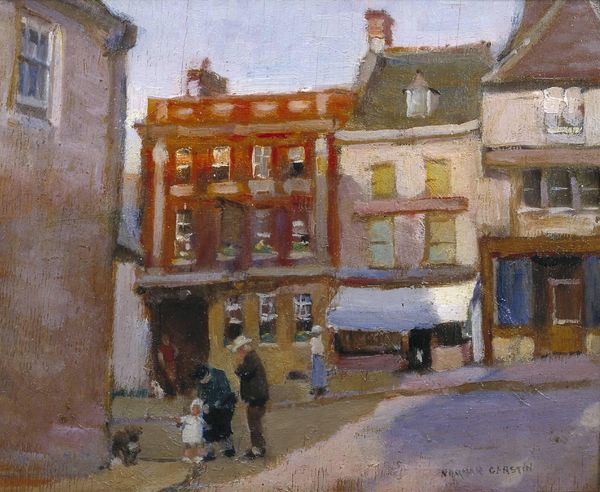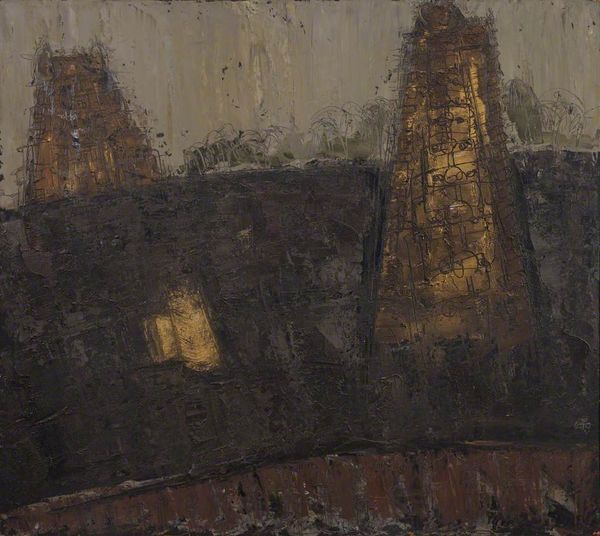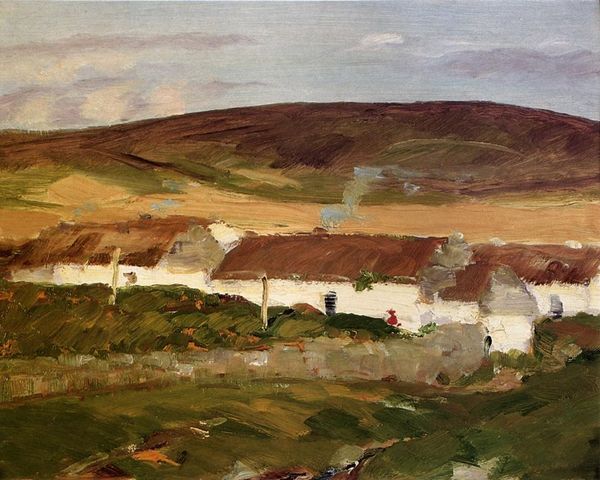
Copyright: Public domain
Editor: This is Samuel Peploe’s “Kirkcudbright,” an oil painting from 1916. It's a landscape, but more than that, a built landscape. The brushstrokes are thick, and the muted colors create this almost dreamlike vision of the town. What stands out to you when you look at it? Curator: I see a compelling emphasis on the materiality of paint itself. Look at how Peploe uses the oil paint not to just depict the town, but to construct it, brick by brushstroke. The visible, almost crude, application draws our attention to the labour involved in its making. This was painted during wartime; how do you think that socio-political context impacted Peploe's engagement with materiality? Editor: That’s interesting! I hadn’t thought about the labour aspect so directly. Maybe the rough, unfinished quality is a reflection of the disruption and anxiety of that time, where even something like painting would have felt very different. Do you see this in other paintings of this era? Curator: Absolutely. There’s a larger move in art during the early 20th century to acknowledge, rather than conceal, the means of production. It moves away from trying to disguise brushwork, and instead it's embraced as part of the work. What does that mean for consumption, then? How does making the material visible impact its place within art history, the market? Editor: So, it’s not just about depicting a place, but making us think about what goes into creating that depiction, too. It makes it more real somehow, by admitting its own artifice and history. Curator: Exactly. This forces the viewer to reckon with the whole economic and social fabric that surrounds art, turning landscape into something less idyllic, more deliberately crafted, bought, and sold. Editor: I’m now seeing it less as a picturesque scene and more as a document of a particular process, made within a specific context. Thanks! Curator: And I now view it with renewed interest in what other historical events, processes and cultural forces went into making it as we see it!
Comments
No comments
Be the first to comment and join the conversation on the ultimate creative platform.
